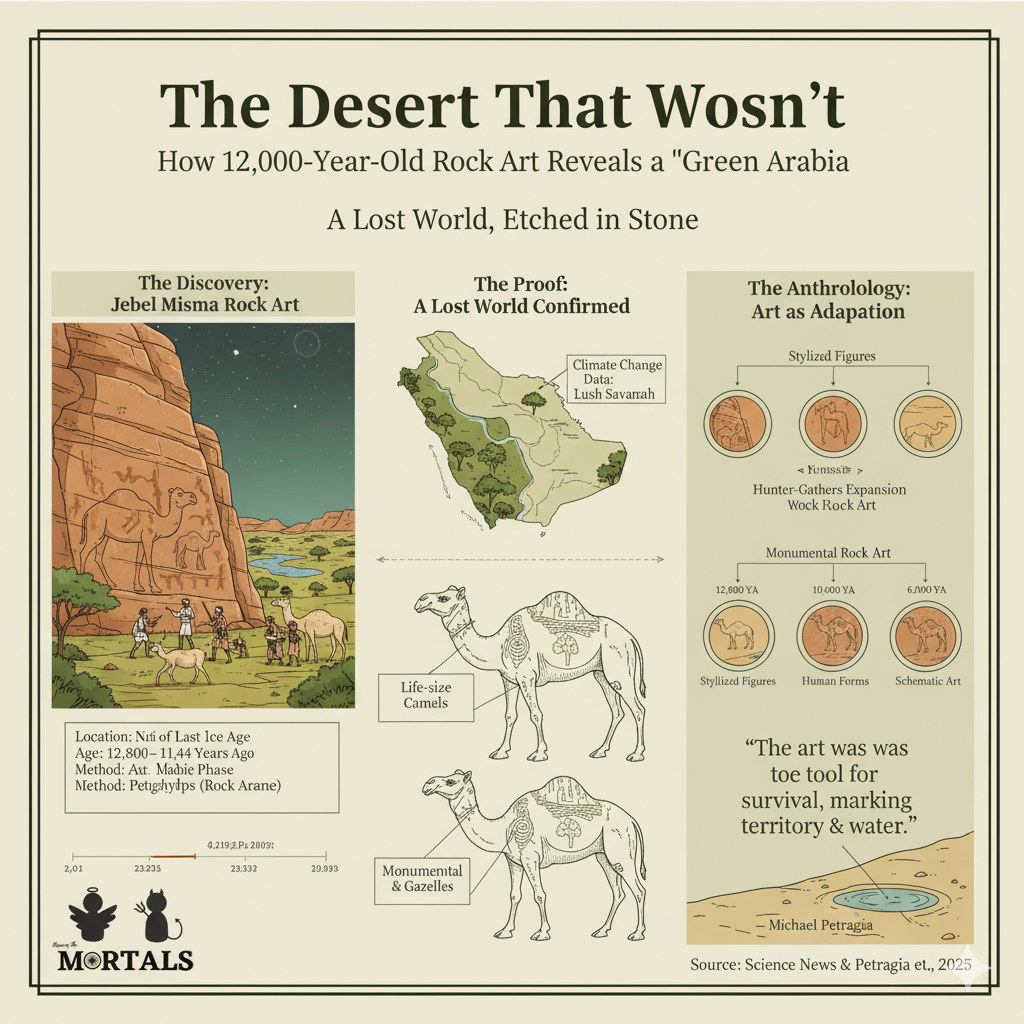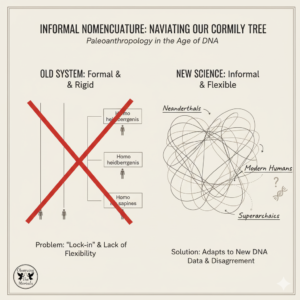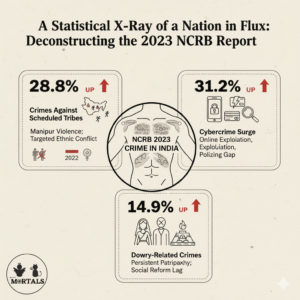When we picture the Arabian Peninsula, we imagine a vast, timeless, and arid desert. But recent archaeological discoveries are shattering that image. Carved into the towering cliffs of Saudi Arabia’s Nefud desert, scientists have documented spectacular, life-size engravings of camels and other animals, frozen in a march for over 12,000 years. This is not just ancient art; it is a stunning window into a lost world. It is the definitive proof of a “Green Arabia,” a once-lush savannah teeming with life, and a testament to the sophisticated hunter-gatherer peoples who lived and created there at the end of the last Ice Age.
The Information Box
Syllabus Connection:
- Paper 1: Chapter 1.8 (Prehistoric Archaeology: Mesolithic/Upper Palaeolithic Art), Chapter 10 (Ecological Anthropology), Chapter 1.3 (Archaeological Anthropology)
Key Concepts/Tags:
- Rock Art (Petroglyphs), Green Arabia, Paleoanthropology, Hunter-Gatherers, Last Glacial Maximum, Jebel Misma
The Setting: Who, What, Where?
The discovery, detailed in Nature Communications, centers on several rock outcrops, most notably Jebel Misma, in the Nefud desert of northern Saudi Arabia. An international team of researchers, led by paleoanthropologist Michael Petraglia as part of the ambitious “Green Arabia” project, has documented and dated hundreds of petroglyphs (rock engravings). The crucial finding is their age: created between 12,800 and 11,400 years ago, they belong to the Late Pleistocene and early Holocene, the period immediately following the end of the last Ice Age.
The Core Argument: Why This Study Matters
This is a major revision of the prehistory of the Arabian Peninsula, with three profound implications.
- Rewriting the Timeline of Art and Culture: The most significant finding is the great age of the art. It is thousands of years older than any previously known major rock art in Saudi Arabia (which dated to the Neolithic period, around 8,000 years ago). This discovery pushes back the history of significant symbolic and artistic expression in the region to the era of post-ice age nomadic hunter-gatherers.
- A Cultural Record of a “Green Arabia”: The art provides a vivid bestiary—life-size camels, extinct wild cattle (aurochs), gazelles, and ibex. This is not just art; it is a direct cultural record that confirms and illustrates the findings of paleoclimatology. It is tangible proof of a time when the now-arid desert was a lush, green savannah with temporary lakes, capable of supporting large herds of game animals and the nomadic hunters who depended on them.
- The Birth of a Monumental Artistic Tradition: While stone tools found at the sites show that these ancient people had cultural links to groups in the Eastern Mediterranean, the style and monumental scale of the engravings are entirely unique. The researchers argue that this represents the birth of a “brand new phenomenon”—a local, independent artistic tradition. These massive engravings, visible for miles, were likely a powerful way for these nomadic groups to mark their territory, signal important resources like water, and stamp their identity onto the landscape.
The Anthropologist’s Gaze: A Critical Perspective
- Art as an Adaptive Strategy: An ecological anthropologist would analyze this rock art not as mere decoration, but as a key part of the hunter-gatherers’ adaptive strategy. In a vast, newly green landscape, creating massive, permanent markers was likely a crucial way of communicating vital social and economic information to other nomadic groups—about territorial boundaries, the location of water sources, or the seasonal presence of certain game animals. The art was a tool for survival.
- A Story in Stone: The Four Phases: The discovery that the art was created in four distinct phases over thousands of years is a story in itself. An archaeologist would analyze the evolution of the artistic style—from small, stylized female figures, to larger human forms, to the peak of large-scale naturalistic animals, and finally to more “cartoonish” and schematic depictions. This stylistic progression reveals long-term changes in cultural conventions, social priorities, and perhaps even the artists’ relationship with their world.
- The Deep Link Between Climate and Culture: This case study is a perfect prehistoric example of the intimate relationship between climate change and cultural change. The artistic tradition emerges as the climate becomes wetter, allowing people and animals to populate the region. It flourishes during this “Green Arabia” phase. Then, as the climate turns arid again after 6,000 years ago, the tradition fades. It is a powerful record of a culture that blossomed and then disappeared along with its environment.
The Exam Angle: How to Use This in Your Mains Answer
- Types of Questions Where It can be Used:
- “Discuss the key features and significance of prehistoric art with examples.”
- “Analyze the relationship between environment and culture in prehistoric societies.”
- GS-1 (History/Culture): “New archaeological findings are constantly reshaping our understanding of ancient history. Discuss.”
- Model Integration:
- On Prehistoric Art: “Recent discoveries are continuously expanding our knowledge of prehistoric art beyond the caves of Europe. The 12,000-year-old, life-size animal engravings found at Jebel Misma in Saudi Arabia, for instance, not only push back the timeline of art in the region but also provide a direct record of the fauna of a ‘Green Arabia’ at the end of the last Ice Age.”
- On Ecological Anthropology: “The profound link between environment and culture is evident in the archaeological record. The monumental rock art of Jebel Misma was created by hunter-gatherers during a wet, ‘Green Arabia’ climatic phase and likely served as an adaptive tool to mark territory and water sources in this newly populated, lush landscape.”
- For a GS-1 Answer: “New archaeological findings are rewriting the prehistory of regions once considered peripheral. The discovery of monumental 12,000-year-old rock art in the Nefud desert demonstrates that the Arabian Peninsula hosted sophisticated hunter-gatherer cultures with unique and monumental artistic traditions during a favorable climatic period following the last Ice Age.”
Observer’s Take
The carvings of Jebel Misma are like a message in a stone bottle, a story from a lost green world. They shatter our modern image of the Arabian desert as a timeless, empty wasteland and replace it with a vibrant picture of a life-filled savannah. These ancient artists, the first nomadic peoples to enter the land after the ice had retreated, did more than just survive; they observed, they created, and they stamped their identity and their stories onto the very landscape. This discovery is a powerful reminder that our planet’s deserts hold deep memories of greener times, and that the story of human creativity and adaptation is written not just in fragile books, but is carved, life-size, into the enduring cliffs of the Earth.
Source
- Title: Monumental sand paintings in the Arabian desert are 12,000 years old
- Publication: Science News
- Link: https://www.sciencenews.org/article/ancient-rock-art-arabian-desert-wet





